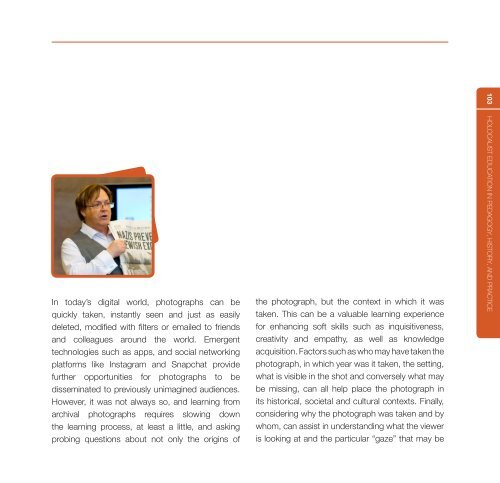2kNreeJ
2kNreeJ
2kNreeJ
You also want an ePaper? Increase the reach of your titles
YUMPU automatically turns print PDFs into web optimized ePapers that Google loves.
In today’s digital world, photographs can be<br />
quickly taken, instantly seen and just as easily<br />
deleted, modified with filters or emailed to friends<br />
and colleagues around the world. Emergent<br />
technologies such as apps, and social networking<br />
platforms like Instagram and Snapchat provide<br />
further opportunities for photographs to be<br />
disseminated to previously unimagined audiences.<br />
However, it was not always so, and learning from<br />
archival photographs requires slowing down<br />
the learning process, at least a little, and asking<br />
probing questions about not only the origins of<br />
the photograph, but the context in which it was<br />
taken. This can be a valuable learning experience<br />
for enhancing soft skills such as inquisitiveness,<br />
creativity and empathy, as well as knowledge<br />
acquisition. Factors such as who may have taken the<br />
photograph, in which year was it taken, the setting,<br />
what is visible in the shot and conversely what may<br />
be missing, can all help place the photograph in<br />
its historical, societal and cultural contexts. Finally,<br />
considering why the photograph was taken and by<br />
whom, can assist in understanding what the viewer<br />
is looking at and the particular “gaze” that may be<br />
103 HOLOCAUST EDUCATION IN PEDAGOGY, HISTORY, AND PRACTICE


